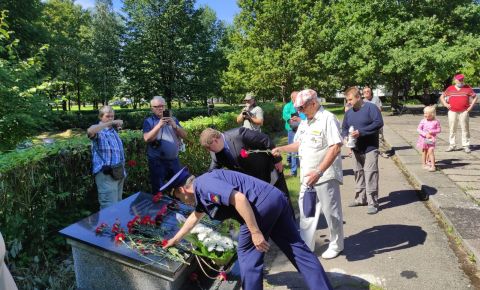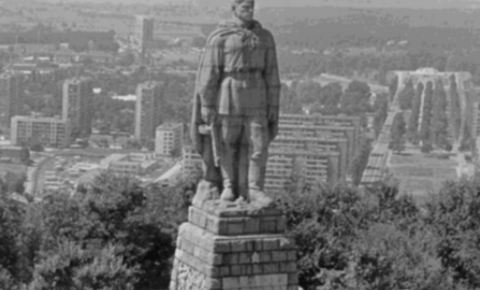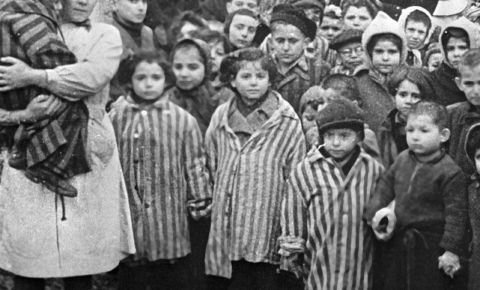The "Road of Life" to the besieged Leningrad
On November 22, 1941, the first lorries carrying foodstuffs drove to Leningrad across the ice of Lake Ladoga. The name the Road of Life given by Leningrad residents to the ice road across Lake Ladoga is not a poetic symbol. It was the only road linking the besieged city to the mainland.
On November 22, 1941, the first lorries carrying foodstuffs drove to Leningrad across the ice of Lake Ladoga. The name the Road of Life given by Leningrad residents to the ice road across Lake Ladoga is not a poetic symbol. It was the only road linking the besieged city to the mainland.
The road was opened at a time when food rations in the city were lowered to the meagre 250 grams of bread per day for workers and 125 grams for everyone else, and thousands of people began to die of starvation. Soldiers on the frontline received 500 grams of bread. However, even to sustain those rations the city needed at least 1,000 tonnes of food per day.

Something incredible had to be done to save the city and help the front: build the infrastructure from scratch that would be working non-stop the whole winter long while solving a lot of issues. Such a project was an enormous challenge for any time period. In fact, it was a triumph of science, especially physics, over the Nazi tactic of using starvation as a means of waging a war.
Most people think of the Road of Life as an ice road along which 30-cwt lorries carried flour to Leningrad. But in reality the Road of Life had many components: an air bridge with the mainland, the Ladoga military flotilla which was protecting the communications, and the Northwestern river shipping company which carried cargoes during the navigation period when the lake was not covered with ice. In addition, a telephone and telegraph cable was laid for communication with Moscow and a high voltage power cable which delivered electric power to Leningrad from the Volkhov hydro power plant. Both cables ran along the bottom of Lake Ladoga. A special pipeline, also laid underneath the lake, provided Leningrad with fuel.

The idea of an ice road had been discussed in Leningrad since September 1941. On September 24, Andrei Zhdanov and members of the Military Council of the Leningrad Front were presented with 34 pages of materials comprising maps and texts. The study of ice condition along the projected routes began on November 12. Each step made by reconnoitres was a step into the unknown. The ice road was just 12 to 15 km away from German positions so there was a constant risk of air raids or artillery shelling.
Leningrad meteorologists made a special forecast for Ladoga for the winter of 1941-1942 and kept making detailed maps showing the state of the ice and a forecast of any changes. The ice load-bearing capacity was measured several times each month.

Order No. 00172 On Organising an Automobile and Tractor Road across Lake Ladoga was signed in the evening of November 19, 1941.
On November 22, 60 vehicles drove across the ice towards Kobona. They came back after delivering 33 tonnes of bread to Leningrad. That was the launch of the ice track, The Road of Life. Each of the one-and-a-half-tonne trucks carried only five to six sacks of flour for fear that the ice would not support any more weight.

Throughout the two winters of the siege, over 1 million tonnes of cargoes were shipped and about 1.5 million people were evacuated via the ice road. It was serviced by around 4,000 vehicles as well as horse-drawn transport. Every fourth vehicle did not return from the route as it either fell through the ice or was hit by a bomb or artillery shelling.
In 1965, a group of divers walked along the Road of Life on the bottom of the lake to mark the 20th anniversary of Victory. They said that almost the entire way they stepped on vehicles’ roofs.
The Road of Life was not only used to bring food to Leningrad. On the return route the vehicles carried products, including military ones, that factories in Leningrad continued making during the siege. Even KV tanks were shipped along the ice road as in 1941 such tanks were manufactured only in Leningrad.

The Ladoga ice road was operational also in the winter of 1942-1943, when it was used not only to deliver supplies to the city but also to prepare the assault of the Red Army to break through the siege.
 В Каунасе прошли памятные мероприятия в день освобождения города от немецко-фашистских захватчиков
В Каунасе прошли памятные мероприятия в день освобождения города от немецко-фашистских захватчиков
1 августа 2021 года в день 77-й годовщины освобождения города Каунаса (Литва) от немецко-фашистских захватчиков советник-посланник Сергей Рябоконь и военный атташе при Посольстве России в Литве Олег Давлетзянов совместн...
01 Aug 2021





